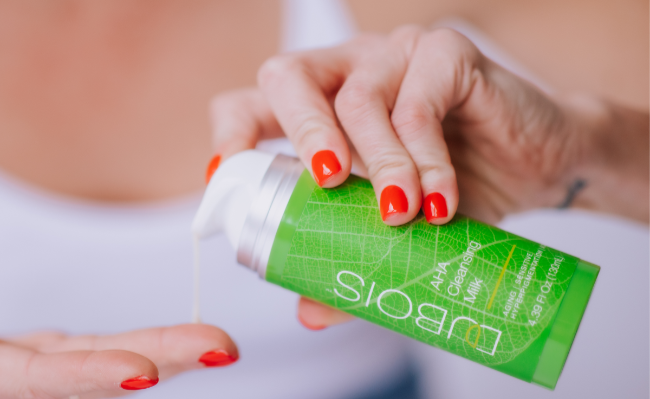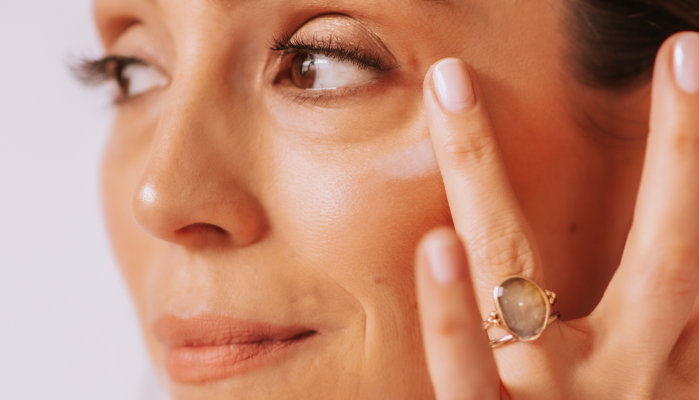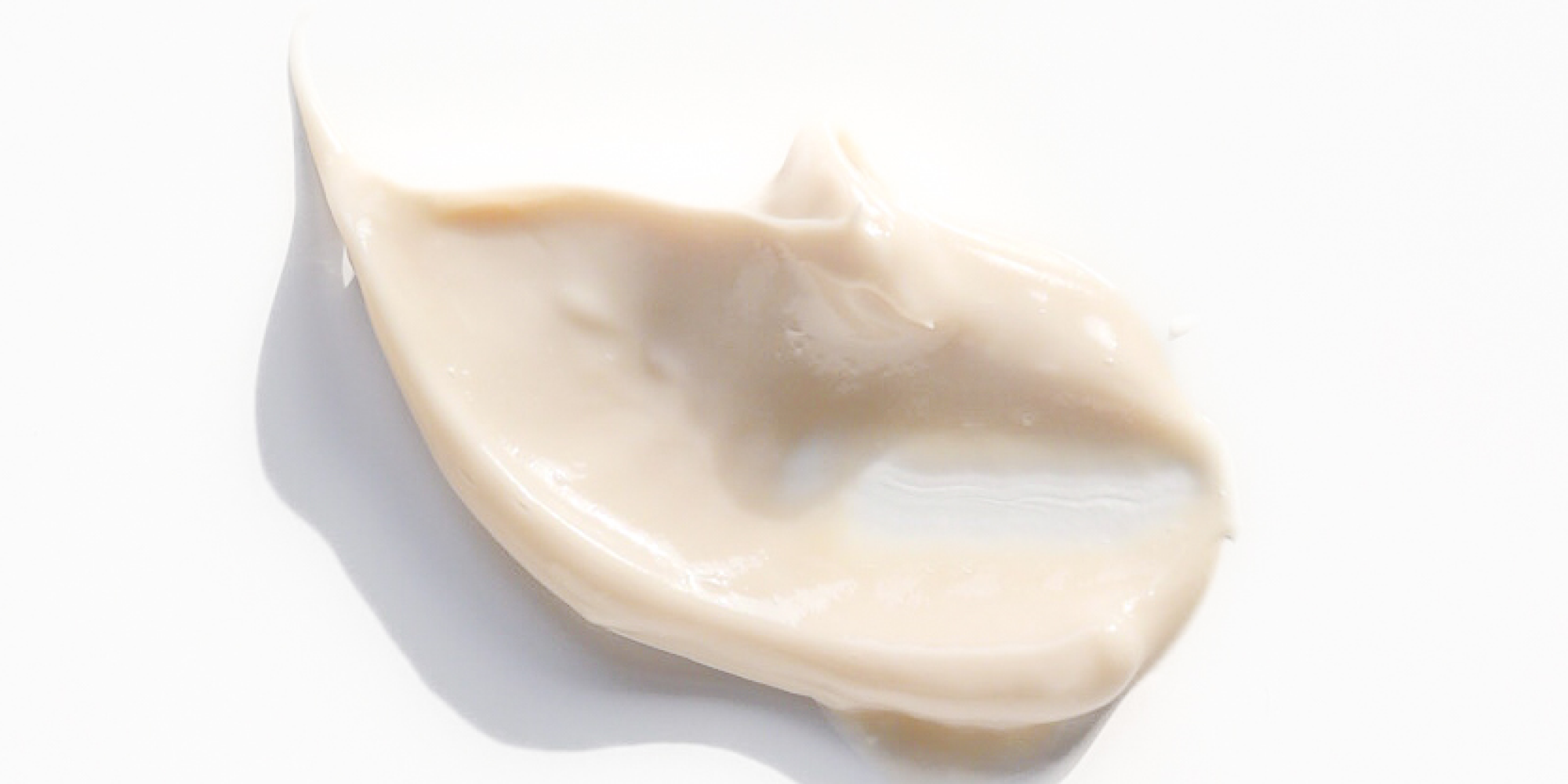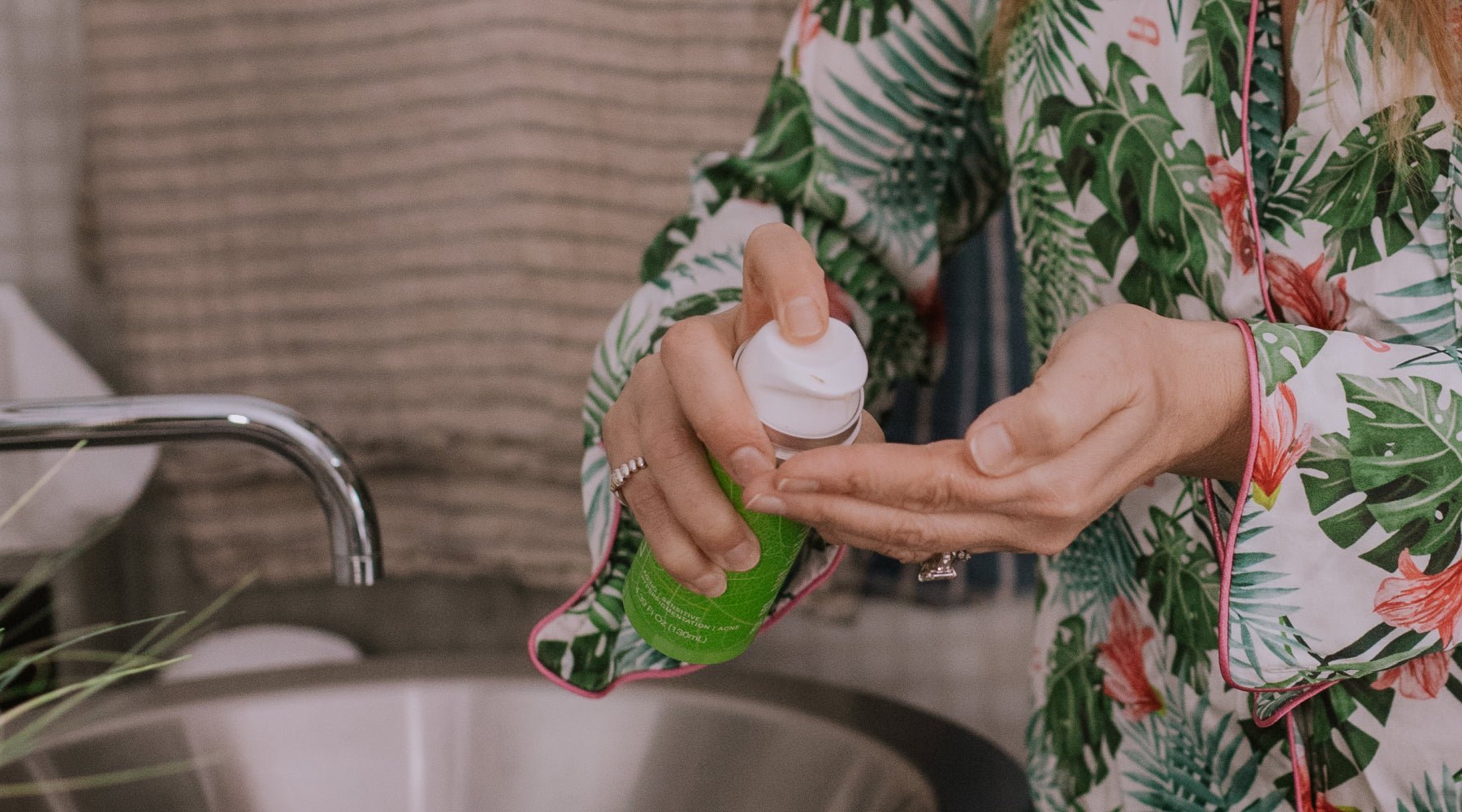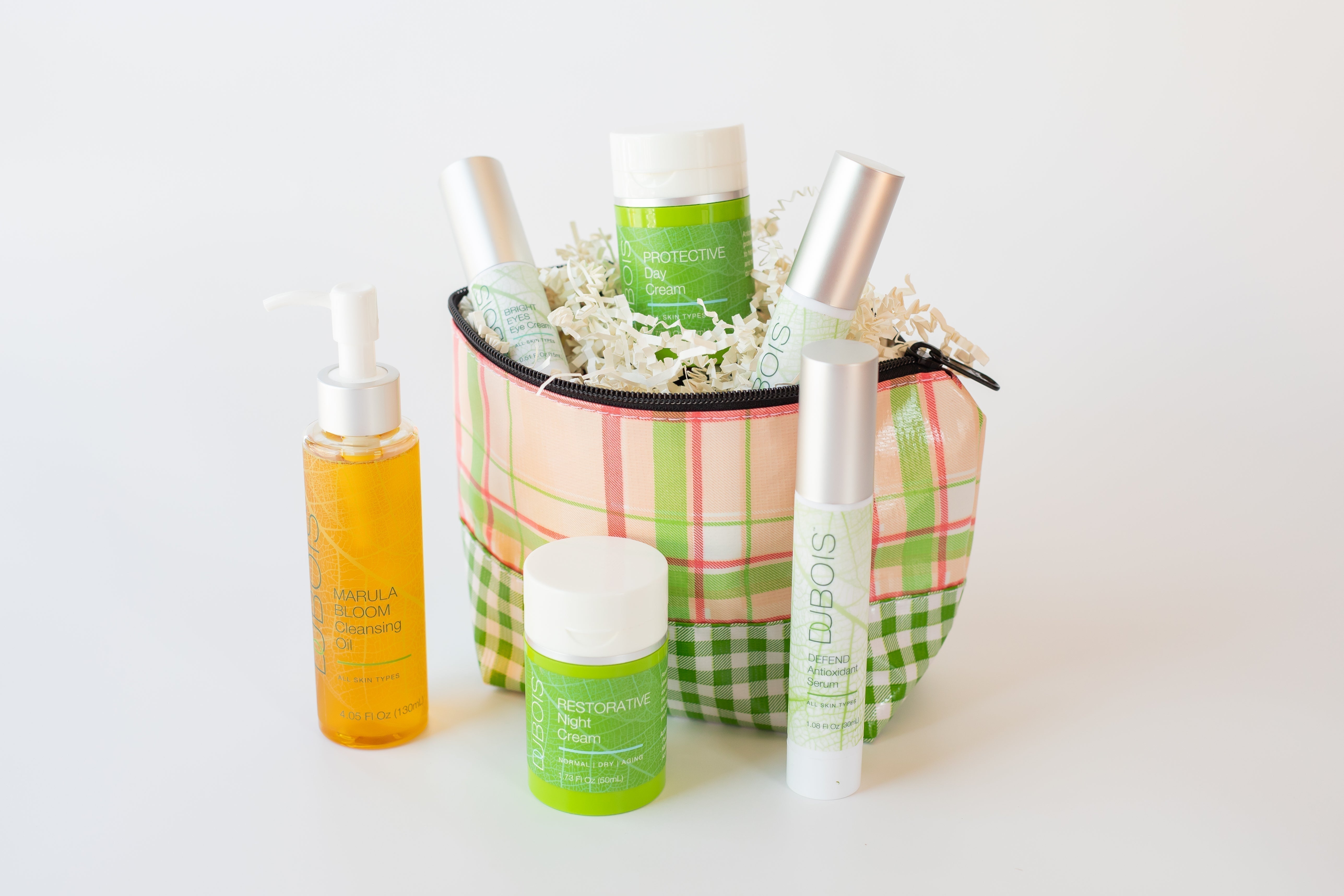How to Treat Hormonal Acne Naturally and Effectively
Written by Denise Dubois - Published at
Hormonal acne can feel like a stubborn skin mystery—often flaring up even when you’re eating clean, using skincare, and managing stress. Whether you're going through puberty, perimenopause, or simply experiencing hormonal shifts, this type of acne is deeply rooted in internal changes, not just surface-level issues.
The good news? With a thoughtful, holistic approach—including skincare that supports the skin's microbiome—you can address hormonal acne effectively and naturally.

What Is Hormonal Acne?
Hormonal acne is caused by fluctuations in hormones—especially androgens such as testosterone—which play a key role in oil production. When these hormones surge, they tell the sebaceous glands to produce more sebum (oil). This excess oil doesn’t just sit on the skin; it becomes thicker and stickier, making it more likely to clog pores, trap dead skin cells, and create the perfect environment for acne-causing bacteria to thrive.
Common Causes of Hormonal Acne:
- Hormonal shifts: menstrual cycles, pregnancy, postpartum, perimenopause, and menopause
- Polycystic ovary syndrome (PCOS) and other endocrine disorders
- Stress-induced cortisol spikes
- Dietary triggers, especially those high in dairy or sugar
- Lack of sleep, which can throw hormone levels out of balance
Why Testosterone Matters
Testosterone increases oil production by enlarging the sebaceous glands and stimulating more sebum release. The sebum also becomes more comedogenic—meaning it’s more likely to block pores and form comedones (blackheads and whiteheads). In women, even a slight hormonal imbalance in favor of androgens can trigger breakouts, particularly around the chin, jawline, and lower cheeks.
Where Does Hormonal Acne Show Up?
Hormonal acne tends to form in specific areas, often called the "hormonal pattern."
- Chin and jawline (the most common zones)
- Neck and lower cheeks
- Shoulders and upper back (especially in cases related to excess sweating or workout routines)
- Back ("bacne") in more severe cases
The breakouts are usually deeper, more inflamed, and often painful to the touch. These blemishes may take longer to heal and are more prone to leaving behind hyperpigmentation or scarring.
Lifestyle Adjustments to Manage Hormonal Acne
Your daily habits have a profound impact on hormonal balance and skin health. Small, consistent changes can bring major improvements to your skin’s condition.
Diet & Hydration
What you eat influences your hormones and inflammation levels.
- Focus on whole foods, especially leafy greens, berries, seeds, and omega-3-rich fish like salmon.
- Avoid high-glycemic foods (sugar, white bread, soda) that spike insulin, which in turn stimulates androgen activity.
- Reduce or eliminate dairy, particularly skim milk, which may affect hormone levels in sensitive individuals.
- Drink at least 8 glasses of water daily to support lymphatic detoxification and skin hydration.
Stress Management
Stress increases cortisol, which can trigger a hormonal cascade that increases oil production.
- Practice mindful breathing or meditation daily.
- Consider journaling, acupuncture, or sound therapy—like those offered at Complexions Spa.
- Create intentional "unplugged" time to reduce nervous system overload.
Sleep & Movement
- Prioritize 7–9 hours of quality sleep to allow your body (and skin) to repair.
- Regular exercise improves insulin sensitivity, reduces inflammation, and balances hormone levels—plus, it’s great for mental health.
Topical Treatments That Help
At DuBois Beauty, we embrace a microbiome-first philosophy. Instead of aggressive ingredients like benzoyl peroxide that strip the skin, we focus on soothing inflammation, reducing congestion, and supporting the skin’s natural defense system.
Microbiome-Friendly Ingredients We Recommend:
- Salicylic Acid: A BHA that gently exfoliates and unclogs pores from within. It penetrates oil and helps clear breakouts without compromising the skin’s barrier.
- Niacinamide: Reduces inflammation, calms redness, and regulates sebum production while supporting barrier repair.
- Willow Herb Extract: A natural botanical that has been shown to inhibit P. acnes bacteria and reduce redness.
- Polylysine: A naturally occurring amino acid compound with antibacterial properties that helps defend against acne-causing bacteria while supporting the microbiome.
We do not recommend benzoyl peroxide, as it may kill both harmful and beneficial bacteria, leading to microbiome disruption, increased sensitivity, and rebound breakouts.
DuBois Beauty Recommended Products
Here’s a look at our go-to product lineup for balancing hormonal skin, soothing inflammation, and restoring clarity—without harsh side effects.
1. Purity Charcoal Cleanser
Activated charcoal lifts impurities from pores while calming botanicals and tea tree oil help detoxify without drying.
2. Clear Mineral Mist
A refreshing post-cleansing mist rich in zinc and magnesium to rebalance pH, calm skin, and prep for serums.
3. Willow Herb Healing Serum with Polylysine
Combines the calming power of willow herb with polylysine to reduce redness, balance the microbiome, and support skin healing from the inside out.
4. Hydro Gel Moisturizer
A lightweight, oil-free hydrator that delivers long-lasting moisture with hyaluronic acid, while soothing acne-prone skin with plant-based ingredients.
5. Vital A Serum
A plant-based retinol alternative that improves skin texture, unclogs pores, and enhances cell turnover—gentle enough for acne-prone or sensitive skin types.
When to See a Dermatologist
While many cases of hormonal acne can be managed with natural and topical treatments, there are times when medical guidance is necessary.
Signs You Should See a Specialist:
- Painful, cystic acne that does not respond to topical treatments
- Persistent breakouts with scarring or pigmentation
- Suspected hormonal imbalance or PCOS
- Emotional distress due to acne
Dermatologist-Recommended Options May Include:
- Oral contraceptives: Help regulate estrogen and androgen levels in women.
- Spironolactone: A medication that blocks androgen receptors, reducing oil production.
- Isotretinoin (Accutane): For severe, treatment-resistant acne; used under close medical supervision.
- Hormone testing: To evaluate imbalances related to PCOS, thyroid issues, or adrenal health.
How to Identify and Understand Your Acne Type
Not all acne is created equal. Recognizing your type helps you tailor the most effective treatment plan.
Cystic Acne:
Deep, inflamed lesions under the skin that often hurt and can scar. Usually hormonal in nature and often found on the jawline or chin.
Comedonal Acne:
Includes blackheads and whiteheads caused by blocked pores. Can be aggravated by sticky sebum and sluggish cell turnover.
Back and Shoulder Breakouts:
Often linked to sweat, hormonal imbalances, or friction from clothing and sports gear.
If you’re unsure, schedule a consultation at Complexions Spa where our team can help identify your skin type and customize a treatment and product plan that respects your skin’s unique biology.
Final Thoughts: Hormonal Acne Is a Whole-Body Conversation
Hormonal acne is not something to “fight” with aggressive chemicals—it's your body communicating an internal imbalance. By taking a holistic approach, nurturing your microbiome, and using intelligent, plant-based ingredients, you can calm inflammation, support healing, and experience clearer, healthier skin—naturally.
With patience and consistency, hormonal acne becomes something you manage with grace, not frustration. For more information visit our website!

